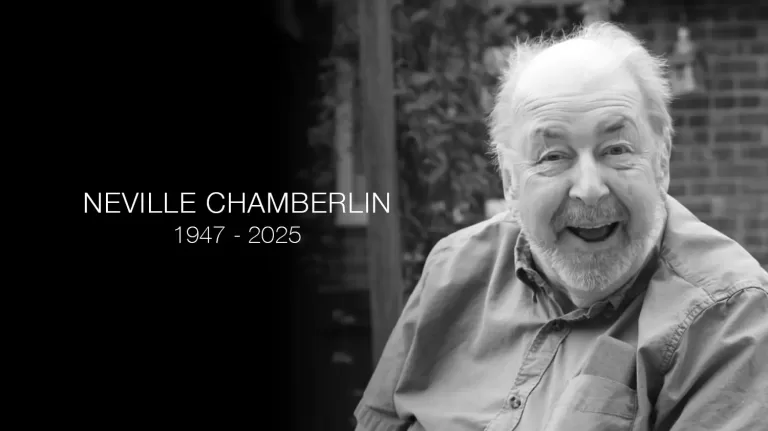With Scientology leader David Miscavige officially announcing the much-anticipated “Golden Age of Administration” at the 2024 New Years event last weekend at the Shrine Auditorium, the stage has been set for what he describes as a “new era of expansion” for the controversial group. However, a closer look at leaked statistics paints a vastly different picture and suggests Scientology is in fact going through an era for which ‘Dark Age of Mass Contraction‘ would be a more fitting title.
At the IAS (International Association of Scientologists) event last month, Miscavige announced a number of new Scientology buildings that are due to open in the coming months as part of the ongoing ‘Ideal Org’ program. Although he failed to attend in person after protestors disrupted their plans, he started with news of the grand opening of a training facility on the same Saint Hill property where the event was being held.

The £5.6 million ($7.1 million USD) Qualifications Building, which Scientology claims is a “brand new, 20,000 square foot” building, but planning documents filed with Mid-Sussex District Council show was completed four years ago and measures just 12,000 square foot, is located at the southern end of the Church’s sprawling East Grinstead estate from where Scientology directs its UK and European operations.
Designed to “provide Scientology training and counselling to Saint Hill’s growing ecclesiastical ministry,” the building’s importance “cannot be overstated” according to a statement released on the Scientology website, which marks its opening as a key milestone in “an unrelenting era of expansion”. However, details shared by staff members on Facebook paint a very different story and show Scientology is in fact shrinking at a rate of knots.
In one post, a Scientology London staff member reports last year (2022), the Test Centre on Tottenham Court Road saw “over 3,500 brand new public walk in” and “over 800 LRH books” were sold to new public.
That makes an average of 10 people walking in and just 2 book sales a day.
In my first year as Director of Public Booksales overseeing both the Ideal Org at 146 Queen Victoria Street and the Test Centre at 68 Tottenham Court Road, we sold 2,112 books to ‘raw’ public – and that was just the ‘Day’ organisation, which excludes evening and weekend sales. This means in 8 years, the Church of Scientology London has seen a 62% decrease in book sales.
The Facebook post also reveals in 2022, “600 people came in for a lecture or personality test” and “223 people started their first ever course/service”, which paints a very sad picture for what was one of David Miscavige’s first ‘Ideal Orgs’ to open way back in 2006.

Across to mainland Europe and things don’t seem to be looking much brighter. In a post in the same Facebook group, one staff member wrote in January 2022 after a 4-week campaign they had sold 62 Dianetics books, “which is the highest ever in 25 years in Denmark”. Considering Scientology’s 2017 press release claimed “75,000 pedestrians pass by” its Copenhagen Org, this suggests Scientology have failed to attract the attention of more than 0.08% of the local population on any given day in the last quarter of a century.
Staff members across the pond reveal it’s an equally dire scene in the US, too. The South Coast Mission, located 50 miles south-east of Los Angeles in California, reported delivering “3 online lectures” a week and selling “400 books” a quarter placed them at the top of the leaderboard in the West US Birthday Game. This suggests no Org or Mission in the entire West US region exceeded more than 30 book sales a week in the first quarter of 2022.
L. Ron Hubbard placed great emphasis on the importance of book sales in a number of policy letters I know all too well from my ‘hatting’ at London Org. “The importance of selling Dianetics and Scientology books cannot be too highly stressed.” and “a book sold today is a PC or student tomorrow. Book sales today form tomorrow’s income” he wrote in one reference. In another titled ‘Book Income’ he wrote “book sales bring in the org income” and in ‘Magazines, Testing, PE’, he stressed “when you don’t advertise and push books they don’t sell. When books don’t sell you don’t get new people.”
Thus the sale of books is, according to policy, integral to the expansion of Scientology. With such depressing statistics, it’s hard to see how David Miscavige can continue to claim “unprecedented expansion” and justify spending millions of dollars in parishioner donations on lavish property renovations and real estate acquisitions. Common sense would suggest perhaps some advertising or marketing expenditure may be a more effective use of Scientology’s money.
Chris Shelton, who was previously an executive at Scientology’s West US headquarters in Los Angeles, California, says “Scientology’s production is measured tightly by its numbers and these numbers show a group that is barely even showing up to work. They like to tell themselves they are clearing the planet but at this rate they aren’t even clearing a city block.”
Former Scientology spokesperson Mike Rinder also recently revealed some statistics on his blog, which leaked from a high-ranking executive in the US. In the article, he wrote the “cumulative number of first service starts (from all US ideal orgs since opening as Ideal) is over 76,000“, which suggests that on average, less than 5 people start their first Scientology service a week across all 33 ‘Ideal Orgs’ in the United States.
So much for “unprecedented expansion”.









